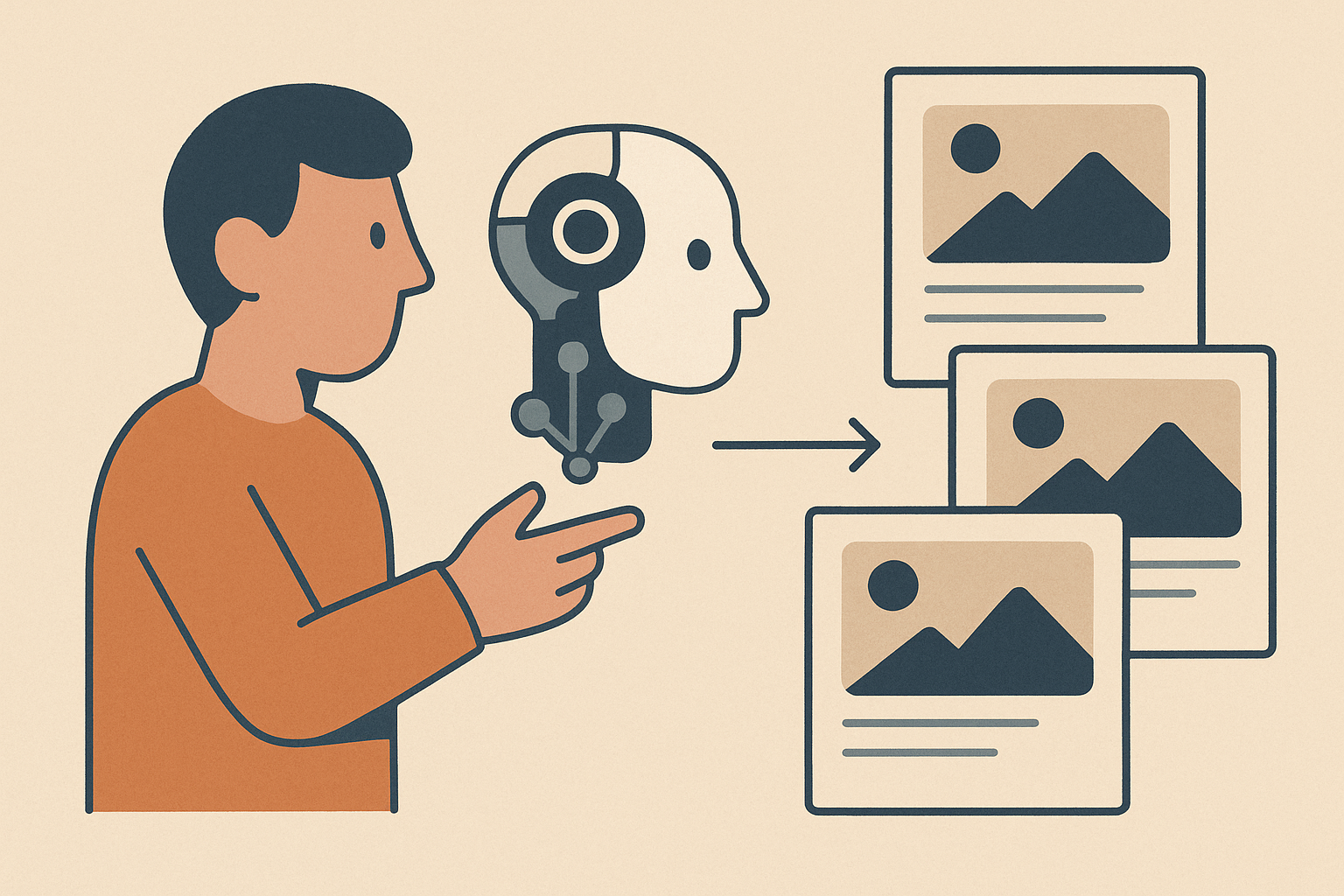AI Where It Helps: Variant Factories, Human Guardrails

AI Where It Helps: Variant Factories, Human Guardrails
TL;DR
AI is amazing at scale, terrible at meaning.
Use it for high-variability, low-risk tasks: variant generation, hooks, cuts, captions, and pattern detection.
But keep humans for the high-judgment moments: claims, tone, brand voice, and decisions that touch trust.
Human-in-the-loop (HITL) is not red tape—it’s ROI protection.
Brands that blend automation with accountability outperform those that let AI run wild. It’s the difference between “fast” and “fast and correct.”
Let experiments, not vibes, decide what wins.
AI suggests. Humans shortlist. Experiments validate. The loop is the strategy.
Why this matters now
The social ecosystem is now a machine: platforms auto-optimize, budgets auto-route, creative auto-adapts.
In other words: speed is free.
The risk? When everything gets faster, teams often let the tools quietly make the decisions that humans should be making consciously:
- Which claim to emphasize
- Which benefit is actually believable
- How much risk we can tolerate
- Where the brand can credibly play
Bain’s advertising research shows AI-driven targeting and creative can deliver 10–25% ROAS lifts—but only when humans review, correct, and calibrate.
Without that, error compounds faster than performance.
Avinash Kaushik said it best: “Data can tell you what happened. It cannot tell you what to do next.”
AI has the same flaw—just faster and more confidently.
The opportunity is to put AI where it shines and humans where it matters.
What to do this month
-
[ ] Use AI as a “variant factory.”
Feed it a strong brief and let it produce:- 20 hooks
- 15 captions
- 10 short-form scripts
- 5 design riffs
Humans choose the top 3–5 that feel real, relevant, and on-brand.
-
[ ] Automate audience discovery, not audience judgment.
Let AI cluster interest signals and behaviors.
But humans must decide which clusters make sense and which are algorithmic hallucinations. -
[ ] Keep humans in all claim-heavy content.
Anything that mentions:- Benefits
- Guarantees
- Comparative performance
- Sensitive categories
must go through human review.
This is literally where trust lives.
-
[ ] Use AI for cutdowns, resizing, repurposing.
Let it adapt assets across platforms automatically while humans review only the edge cases. -
[ ] Force every AI-assisted asset into an experiment.
If it’s not tested, it’s not real.
Pair AI output with lift tests, not last-click metrics.
Evidence & caveats
Bain’s ROAS studies show that AI + human oversight beats both AI alone and humans alone.
BCG notes the same: “Automation scales performance; human judgment preserves it.”
AI reliably improves:
- creative throughput
- audience matching
- testing velocity
- operational efficiency
But it struggles with:
- nuance
- brand voice
- risk
- empathy
- claims
- cultural context
In other words: AI makes you faster, not wiser.
Worse: without guardrails, it makes you confidently wrong at scale.
FAQs & objections
“Can I automate everything except final approval?”
Almost. But beware of “approval fatigue”—humans rubber-stamping content they didn’t shape.
You need humans at the start and the end, not just the last mile.
“Does this slow us down?”
Not if you structure it well.
AI reduces labor.
Humans reduce risk.
The combo increases net speed by preventing expensive mistakes.
“How do I keep tone consistent across AI outputs?”
Codify it. Give the model:
- do/don’t lists
- banned phrases
- proof requirements
- sample paragraphs
Then have a human review for soul.
“What metrics tell me if AI is working?”
Watch for improvements in:
- creative cycle time
- test velocity
- match rates
- lift in qualified actions
- reduction in manual editing
The bigger picture
AI is not the strategist.
It’s the assistant with infinite stamina and zero judgment.
Your job is to decide:
- the promise
- the proof
- the risk tolerance
- the narrative
- the brand’s integrity
AI helps you move faster through the noise, but humans turn speed into meaning.
The future isn’t AI replacing marketers—it’s marketers who know how to aim AI outperforming everyone else.
Read similar content
Similar topics

Beyond #Ad: Why Affiliate + Long-Term Creators Are Eating Paid Social
One-off influencer posts are dying; long-term creator relationships and affiliate engines now outperform traditional paid social.

Creators as the New SEM: Build Searchable Trust, Not Just Impressions
When creators become media channels, brands win by making their content discoverable, trustworthy and measurable—not just viral.

Ditch Vanity: The 4 Social Metrics That Predict Revenue
Likes don’t pay rent. Conversation, amplification, applause, and economic value do. Here’s how to measure social like a strategist—not a scoreboard watcher.

Turn Data Into Revenue: A First‑Party Strategy That Actually Pays Off
Collect consented data for specific use‑cases, wire server‑side measurement, and prove lift with tests.